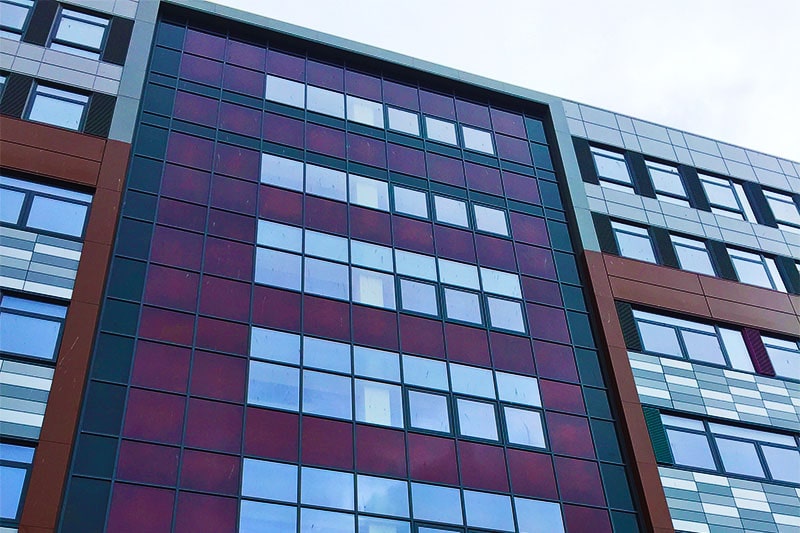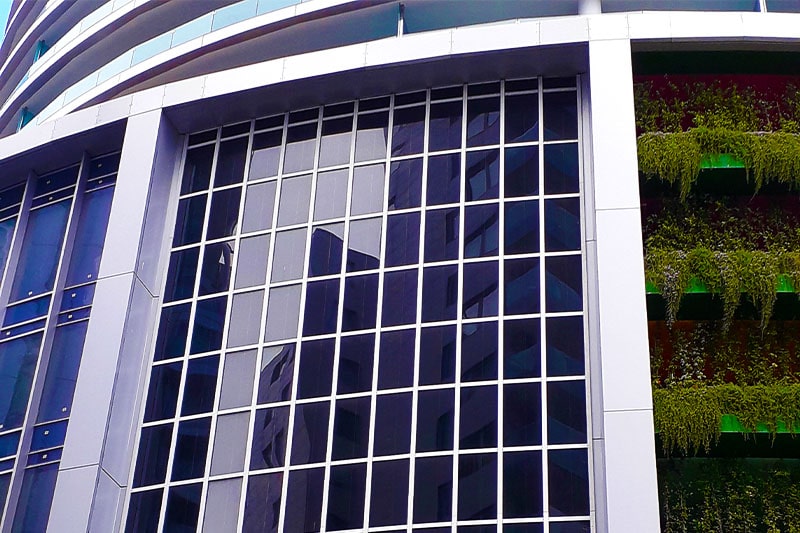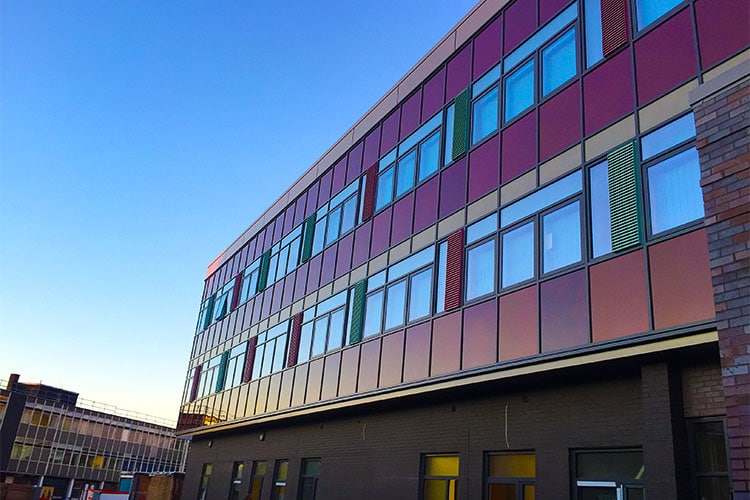When most people imagine solar technology, they think of an enormous field of reflective panels.
But according to Polysolar Founder and CEO Hamish Watson, solar technology is more complicated than that.
“There’s three levels of technology in the solar industry,” Watson said. “There’s the crystalline silicon technology, which is more than 90 percent of the world market. And everybody is familiar with those sorts of solar panels—those are the ones they see in fields.”
“Then there’s another group of technologies called thin film technologies, which were developed about 30 years ago, initially based on amorphous silicon. The basic structure of thin film technologies is that plasma is deposited as powder material. You then create a cell between glass, so you have conductive layers.”
“The third level of technologies—or third generation, as they’re known—is organic photovoltaic, which includes things like organic polymers and a number of other technologies in that field.”

A photovoltaic past
Polysolar has spent the past decade expanding the possibilities of solar energy through research in photovoltaic solar technology.
“We started the company developing organic photovoltaics,” Watson said, “but they were a long way from market. So, we then started producing thin film photovoltaics, and we worked in a number of different technologies within that field.”
Watson’s approach to solar technology has always been client based by developing technical solutions to meet the particular needs of each project Polysolar works on.
“We try to offer the solar technology that’s most appropriate to the situation,” Watson said. “For example, in a building you would generally want to put in the highest performance and cheapest technology on the roof, which typically means a standard PV array with crystalline silicon. And then you look at thin films for the facade of the building.”
Unlike their crystalline counterparts, these thin, malleable panels can be hidden in plain sight, incorporated into construction projects ranging from historic buildings to industrial greenhouses to large skyscrapers, improving energy costs and reducing the structure’s carbon footprint.

“There’s two basic benefits from building integrated photovoltaics,” Watson said. “One is obviously the power generation, and that can either be into the grid, direct into the grid or directly into storage. The other side of it is building performance, reduced thermal gain from a glazing point of view or the reduced thermal losses, which saves you energy as well as generating energy.”
From a financial perspective, one of the unique benefits of integrated photovoltaics are what Watson calls a substitutional material.
“You’re substituting a cladding material, whatever that is, whether that’s opaque or transparent—or, for example, glass,” Watson said. “You’re swapping one for another. So, the only bit you’re really paying for is the PV, and not all the mounting systems and everything else, which goes alongside it.”
Sustainable by design
With building and planning regulations increasingly shifting to prioritize the construction of zero carbon buildings, PV is an elegant way to incorporate green energy into the design of any facade.
One fascinating example is Polysolar’s research into using PV materials in automotive glazing to extend the mileage of electric and self-driving cars.
“At the moment, the technology is not sufficiently powerful to actually power up an electric car for all its mileage,” Watson said, “but it does add an extra avoidance of running out of fuel. You can recharge yourself and get to the nearest charge point.”
A charge point, Watson added, could be made of PV materials. “Charging stations are modular units,” Watson said, “which means that you can factory produce the whole thing and then just plug it in. Obviously, you want to charge your car from renewable energy rather than just the grid, and you want them in a nice, attractive structure, and PV allows us to create these structures.
The future is bright
Expanding the use of photovoltaic solar technologies in areas beyond conventional large-scale construction has led the Polysolar team to some unexpected discoveries.
“We’re very involved in agricultural projects and building greenhouses for horticulture,” Watson said. “There the solar glass has some very interesting impact on how plants grow. For example, it can increase or even double the protein content of green leafy vegetables.”
While reducing reliance on conventional energy, PV glass in agricultural applications apparently has the side effect of increasing the amount of energy stored by plants, leading to a more nutritious, cleaner crop.
As PV technology proliferates, Watson said he hopes to see it incorporated into a much wider array of new construction projects.
“As far as we’re concerned, building regulations are very out of date and very conservative,” Watson said. “There’s no real reason that zero carbon buildings can’t be made today at not such a significant increase in price.”
“The reality is,” Watson continued, “if you’re actually going to address the broader issue of climate change, you’re going to have to make a move. And this is, quite frankly, the easiest and cheapest area of carbon emissions to address.”











